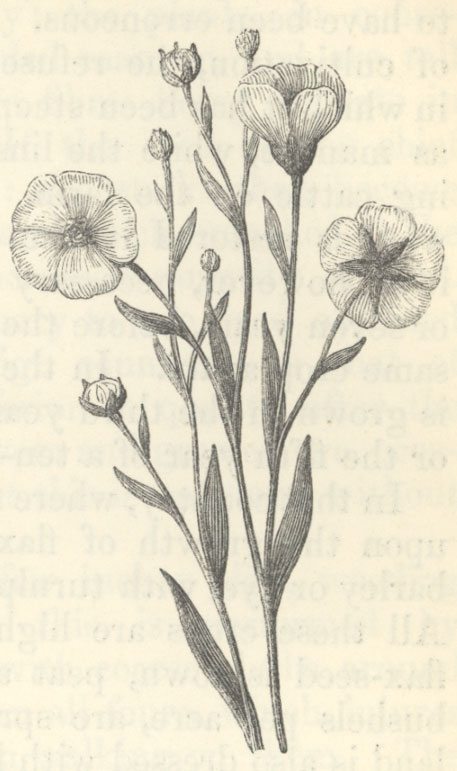Growing and Preparing Flax
Image: The flax plant. The Useful Arts and Manufactures of Great Britain, vol. 1 (London, SPCK, 1846?).
Image from: Science, Technology and Management, Birmingham Central Library
Linen cloth is produced from the fibres of a plant, flax. Flax spinning and the weaving of woollen cloth developed as an industry in the Middle East in ancient times. Flax was grown across the world and by the late eighteenth century its cultivation was widespread in the Netherlands, France, Russia and Prussia. After harvesting, the crop was rippled where flax was drawn through the teeth of a comb to remove the bolls or seed-heads from the stalks. The bolls could then be used for cattle feed.
The next stage was steeping or retting to enable the fibrous bark to be separated from the woody portion of the stem. The stalks were soaked in water and after eight to twelve days, the flax was removed and dried.
After these preparatory activities which were performed where the flax was grown, the raw flax was processed prior to spinning. By the late eighteenth century, flax mills were conducting a lot of the work, often at some distance from the place of origin of the crop itself. Examples included John Marshall’s factories in Leeds and the Ditherington Mill of Marshall, Benyon and Bage.
« Previous in this sectionNext in this section »Continue browsing this section
 Charles Bage, the Flax Industry and Shrewsbury’s Iron-Framed Mills
Charles Bage, the Flax Industry and Shrewsbury’s Iron-Framed Mills
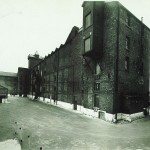 Shrewsbury’s Industrial Context
Shrewsbury’s Industrial Context
 The Location of Ditherington Mill
The Location of Ditherington Mill
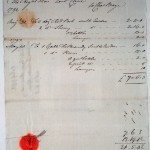 Bill for the supply of liquor from Charles Bage to Lord Clive 1792
Bill for the supply of liquor from Charles Bage to Lord Clive 1792
 Charles Bage and Iron Construction
Charles Bage and Iron Construction
 Charles Bage: Business and Local Affairs
Charles Bage: Business and Local Affairs
 Thomas and Benjamin Benyon
Thomas and Benjamin Benyon
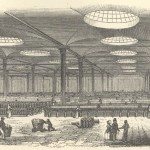 John Marshall
John Marshall
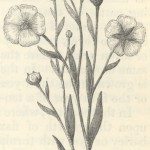 Growing and Preparing Flax
Growing and Preparing Flax
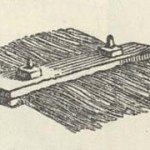 Processing and Spinning Flax
Processing and Spinning Flax
 Ditherington Flax Mill
Ditherington Flax Mill
 Ditherington Mill: Steam Power
Ditherington Mill: Steam Power
 Ditherington Mill: Steam Power
Ditherington Mill: Steam Power
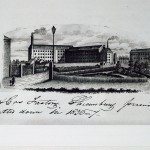 Castlefields Mill: Origins
Castlefields Mill: Origins
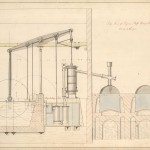 Castlefields Mill: Steam Power
Castlefields Mill: Steam Power
 Castlefields Mill: the Flax Warehouse
Castlefields Mill: the Flax Warehouse
 Castlefields Mill: Gas Lighting
Castlefields Mill: Gas Lighting
 Castlefields Mill: Gas Lighting
Castlefields Mill: Gas Lighting
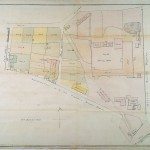 Castlefields Mill: Sale and Demolition
Castlefields Mill: Sale and Demolition
 Kingsland Mill
Kingsland Mill



